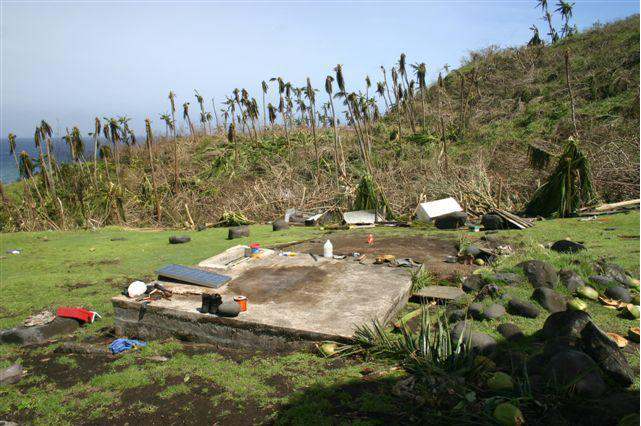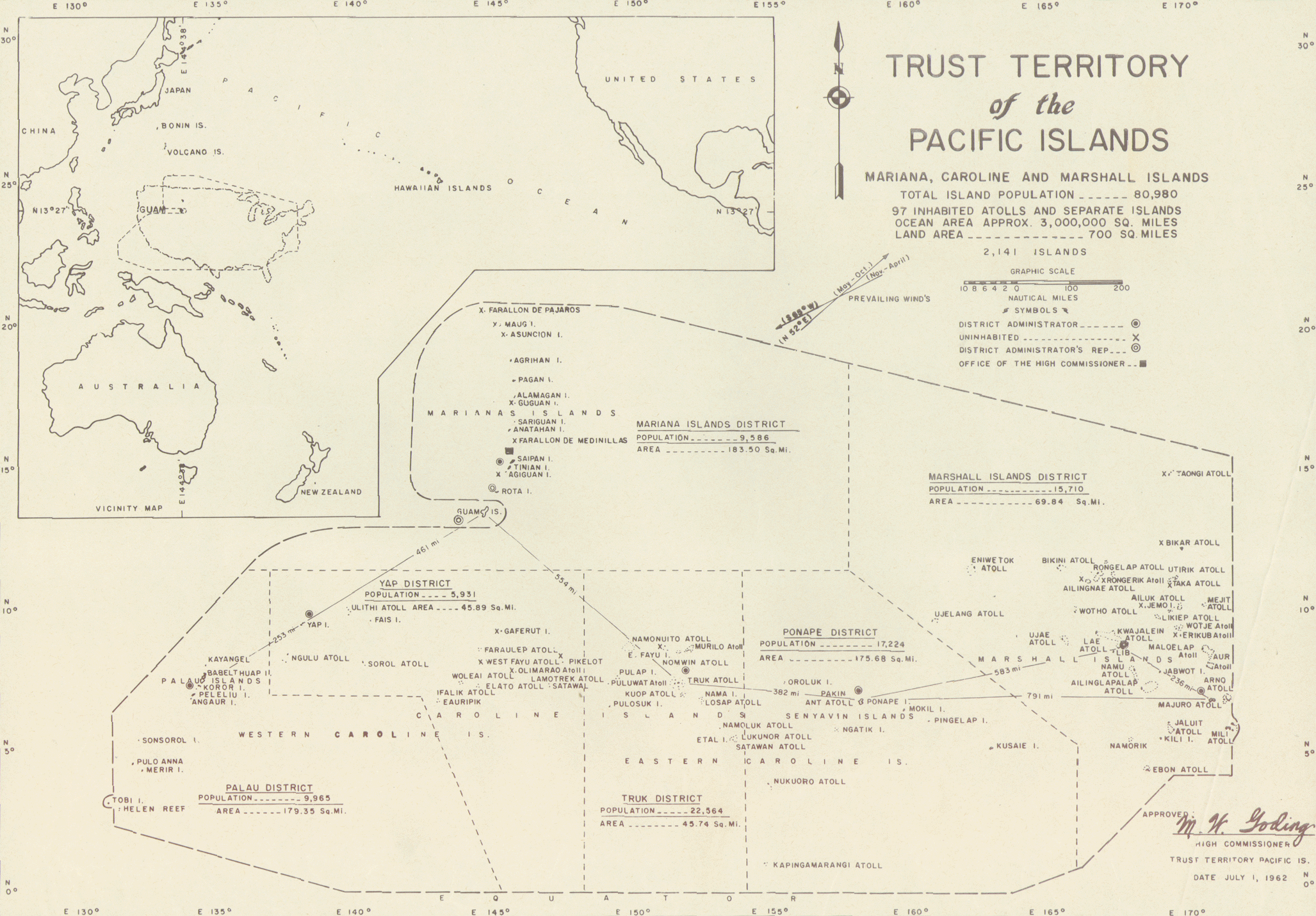|
Alamagan
Alamagan is an island in the Northern Mariana Islands in the Pacific Ocean, north of Guguan, north of Saipan, and south of Pagan. It is currently uninhabited. History Alamagan was once settled by the Chamorros, who left behind archaeological evidence including stone columns (called latte stones) and ceramics. From a European perspective, Alamagan was discovered in 1669 by the Spanish missionary Diego Luis de San Vitores, who named it ''Concepción'' (Immaculate Conception in Spanish). It is likely that it was previously visited in 1522 by the Spanish sailor Gonzalo de Vigo, a deserter from the Magellan expedition in 1521 and the first European castaway in the history of the Pacific. In 1695, Alamagan's natives were forcibly removed to Saipan, and three years later to Guam. Following the sale of the Northern Marianas by Spain to the German Empire in 1899, Alamagan was administered as part of German New Guinea. During this time, a private firm, the Pagan Society, owned by ... [...More Info...] [...Related Items...] OR: [Wikipedia] [Google] [Baidu] |
Typhoon Choi-wan (2009)
Typhoon Choi-wan was a powerful typhoon that became the first Category 5-equivalent super typhoon to form during the 2009 Pacific typhoon season. Forming on September 11, 2009, about to the east of Guam, the initial disturbance rapidly organized into a tropical depression. By September 12, the depression intensified into a tropical storm, at which time it was given the name Choi-wan. The following day, rapid intensification took place through September 14. Choi-wan attained its peak intensity on September 15, as it moved through the Northern Mariana Islands with the Japan Meteorological Agency reporting peak windspeeds of 195 km/h (120 mph 10-minute sustained). Additionally, the Joint Typhoon Warning Center reported the storm to have attained winds of 260 km/h (160 mph 1-minute sustained). The typhoon remained very powerful until September 17 when the storm's outflow weakened. The typhoon underwent an eyewall replacement cycle, leading to i ... [...More Info...] [...Related Items...] OR: [Wikipedia] [Google] [Baidu] |
Northern Mariana Islands
The Northern Mariana Islands, officially the Commonwealth of the Northern Mariana Islands (CNMI; ch, Sankattan Siha Na Islas Mariånas; cal, Commonwealth Téél Falúw kka Efáng llól Marianas), is an unincorporated territory and commonwealth of the United States consisting of 14 islands in the northwestern Pacific Ocean.Lin, Tom C.W.Americans, Almost and Forgotten 107 California Law Review (2019) The CNMI includes the 14 northernmost islands in the Mariana Archipelago; the southernmost island, Guam, is a separate U.S. territory. The United States Department of the Interior cites a landmass of . According to the 2020 United States Census, 47,329 people were living in the CNMI at that time. The vast majority of the population resides on Saipan, Tinian, and Rota. The other islands of the Northern Marianas are sparsely inhabited; the most notable among these is Pagan, which for various reasons over the centuries has experienced major population flux, but formerly had resi ... [...More Info...] [...Related Items...] OR: [Wikipedia] [Google] [Baidu] |
Pagan (island)
Pagan is a volcanic island in the Marianas archipelago in the northwest Pacific Ocean, under the jurisdiction of the Commonwealth of the Northern Mariana Islands. It lies midway between Alamagan to the south, and Agrihan to the north. The island has been largely uninhabited ever since most of the residents were evacuated due to volcanic eruptions in 1981. History Archaeological finds indicate that Pagan was settled from several centuries BC. The first European contact was in 1669, when the island was sighted by the Spanish missionary Diego Luis de San Vitores who named it ''San Ignacio'' ( Saint Ignatius in Spanish). It is likely that it was previously visited in 1522 by the Spanish sailor Gonzalo de Vigo, deserter from the Magellan expedition in 1521, and the first European castaway in the history of the Pacific. The native Chamorro population was forcibly deported to Saipan in 1695, and then three years later to Guam. The Chamorros began to return to Pagan in the early 19 ... [...More Info...] [...Related Items...] OR: [Wikipedia] [Google] [Baidu] |
Guguan
Guguan is an island in the Northern Mariana Islands in the Pacific Ocean. The island is currently uninhabited. Guguan is located south from Alamagan and north from Saipan, and is northeast from Sarigan. History Guguan was discovered in 1668 by the Spanish missionary Diego Luis de Sanvitores who charted it as ''San Felipe''. It is likely that it was previously visited in 1522 by the Spanish sailor Gonzalo de Vigo, deserter from the Magellan expedition in 1521, who was the first European castaway in the history of the Pacific. Uninhabited at the time, in contrast to other islands in the Marianas it was never colonized. As with the other islands in the northern Marianna, Guguan was sold by Spain to the German Empire in 1899, and administered as part of German New Guinea. From 1909 to 1912, the island was leased to a Japanese company, who sent hunters to gather bird feathers for the European hat industry. During World War I, Guguan came under the control of the Empire of Japa ... [...More Info...] [...Related Items...] OR: [Wikipedia] [Google] [Baidu] |
Northern Islands Municipality
Northern Islands Municipality is one of the four main political divisions of the Commonwealth of the Northern Mariana Islands. It consists of a long string of the northernmost islands of the Northern Marianas, including (from north to south) Farallon de Pajaros, the Maug Islands, Asuncion, Agrihan, Pagan, Alamagan, Guguan, Zealandia Bank, Sarigan, Anatahan, and Farallon de Medinilla. The total land area of the islands, including offshore islets and rocks, is 154.755 km² (59.75 sq mi). Population As of the 2010 census, the municipality is reported to be uninhabited. Pagan and Agrihan are known to have seasonal populations. Many Northern Island inhabitants have secondary residences on Saipan due to economic, educational or other needs. Some islands had also been evacuated due to volcanic activities such as in the case of Anatahan (2003) and Pagan (early 1980s). The mayor's office and municipality administration, traditionally in the village of Shomushon on Pagan, ... [...More Info...] [...Related Items...] OR: [Wikipedia] [Google] [Baidu] |
United States
The United States of America (U.S.A. or USA), commonly known as the United States (U.S. or US) or America, is a country primarily located in North America. It consists of 50 U.S. state, states, a Washington, D.C., federal district, five major unincorporated territories, nine United States Minor Outlying Islands, Minor Outlying Islands, and 326 Indian reservations. The United States is also in Compact of Free Association, free association with three Oceania, Pacific Island Sovereign state, sovereign states: the Federated States of Micronesia, the Marshall Islands, and the Palau, Republic of Palau. It is the world's List of countries and dependencies by area, third-largest country by both land and total area. It shares land borders Canada–United States border, with Canada to its north and Mexico–United States border, with Mexico to its south and has maritime borders with the Bahamas, Cuba, Russia, and other nations. With a population of over 333 million, it is the List of ... [...More Info...] [...Related Items...] OR: [Wikipedia] [Google] [Baidu] |
Trust Territory Of The Pacific Islands
The Trust Territory of the Pacific Islands (TTPI) was a United Nations trust territory in Micronesia administered by the United States from 1947 to 1994. History Spain initially claimed the islands that later composed the territory of the Trust Territory of the Pacific Islands (TTPI).''Encyclopædia Britannica''Trust Territory of the Pacific Islands/ref> Subsequently, Germany established competing claims over the islands. The competing claims were eventually resolved in favor of Germany when Spain, following its loss of several possessions to the United States during the Spanish–American War, ceded its claims over the islands to Germany pursuant to the German–Spanish Treaty (1899). Germany, in turn, continued to retain possession until the islands were captured by Japan during World War I. The League of Nations formally placed the islands in the former South Seas Mandate, a mandate that authorized Japanese administration of the islands. The islands then remained under Jap ... [...More Info...] [...Related Items...] OR: [Wikipedia] [Google] [Baidu] |
Pacific Ocean
The Pacific Ocean is the largest and deepest of Earth's five oceanic divisions. It extends from the Arctic Ocean in the north to the Southern Ocean (or, depending on definition, to Antarctica) in the south, and is bounded by the continents of Asia and Oceania in the west and the Americas in the east. At in area (as defined with a southern Antarctic border), this largest division of the World Ocean—and, in turn, the hydrosphere—covers about 46% of Earth's water surface and about 32% of its total surface area, larger than Earth's entire land area combined .Pacific Ocean . '' Britannica Concise.'' 2008: Encyclopædia Britannica, Inc. The centers of both the [...More Info...] [...Related Items...] OR: [Wikipedia] [Google] [Baidu] |
Copra
Copra (from ) is the dried, white flesh of the coconut from which coconut oil is extracted. Traditionally, the coconuts are sun-dried, especially for export, before the oil, also known as copra oil, is pressed out. The oil extracted from copra is rich in lauric acid, making it an important commodity in the preparation of lauryl alcohol, soaps, fatty acids, cosmetics, etc. and thus a lucrative product for many coconut-producing countries. The palatable oil cake, known as copra cake, obtained as a residue in the production of copra oil is used in animal feeds. The ground cake is known as coconut or copra meal. Production Copra has traditionally been grated and ground, then boiled in water to extract coconut oil. It was used by Pacific island cultures and became a valuable commercial product for merchants in the South Seas and South Asia in the 1860s. Nowadays, coconut oil (70%) is extracted by crushing copra; the by-product is known as copra cake or copra meal (30%). The coco ... [...More Info...] [...Related Items...] OR: [Wikipedia] [Google] [Baidu] |
World War II
World War II or the Second World War, often abbreviated as WWII or WW2, was a world war that lasted from 1939 to 1945. It involved the World War II by country, vast majority of the world's countries—including all of the great powers—forming two opposing military alliances: the Allies of World War II, Allies and the Axis powers. World War II was a total war that directly involved more than 100 million Military personnel, personnel from more than 30 countries. The major participants in the war threw their entire economic, industrial, and scientific capabilities behind the war effort, blurring the distinction between civilian and military resources. Air warfare of World War II, Aircraft played a major role in the conflict, enabling the strategic bombing of population centres and deploying the Atomic bombings of Hiroshima and Nagasaki, only two nuclear weapons ever used in war. World War II was by far the List of wars by death toll, deadliest conflict in hu ... [...More Info...] [...Related Items...] OR: [Wikipedia] [Google] [Baidu] |





.jpg)

